I tried Lingmo OS recently and found it an attractive Linux Distro. Below are details on it. Below is a review of it.
Hi Cutefish regression in another form.
Lingmo GNU/Linux (Lingmo OS) is a operating system based on Debian GNU/Linux. It offers a beautiful Desktop environment, includes software tailored for this environment, and features a unified UI style. Lingmo OS aims to provide a smooth and visually appealing desktop experience.
Lightweight and Smooth Experience
Lingmo OS can run on low-performance hardware, offering a lighter and smoother experience than heavy desktop operating systems like Windows 11. Its lightweight nature ensures a fast and enjoyable user experience, making it an ideal choice for both newcomers and seasoned Linux enthusiasts.
Built-in Spark App Store
Enhancing the ease of use, Lingmo OS comes with the built-in Spark App Store, enabling users to effortlessly discover and install essential applications without needing to use the command line. This user-friendly feature simplifies software management, making it easier than ever to keep your system up-to-date and equipped with the tools you need.
You can download Lingmo OS here: https://www.lingmo.org/en
Today we are going to check out a new operating system, currently still in Beta, called Lingmo OS, a Chinese project with some noble objectives, however, common to many other operating systems.
According to the project page , Lingmo OS is a system that values efficiency and beauty of the interface, based on Debian, and that would run well on low-performance computers. Among its potentials that the site highlights:
- Requires less than 2GB of RAM to run;
- It has a new desktop environment, which according to them is not as heavy as KDE;
- The interface has animations;
- It is a suitable system for working with development and office work;
- It has a community for mutual help.
There are many Linux distros with more or less the same ideas and proposals, but without a doubt, a new interface attracts some attention. What interface would that be?
Introducing Lingmo UI
Lingmo UI is actually a revival of a project called Cutefish , which in turn is an interface that copies several elements of the macOS and iPadOS interface, but also brings its own approach to some elements.
Visually, it is a system that looks very modern, it uses several elements with current design trends, transparencies, rounded corners, and so on, but is there anything more?

To begin with, the Beta system still has some bugs that make practical use impossible, for example, we had to change the resolution via the command line.
In the system monitor, the same as GNOME, we can see that Lingmo OS is not a super light system, not that it is necessarily heavy, it is just not lighter than GNOME and KDE themselves.
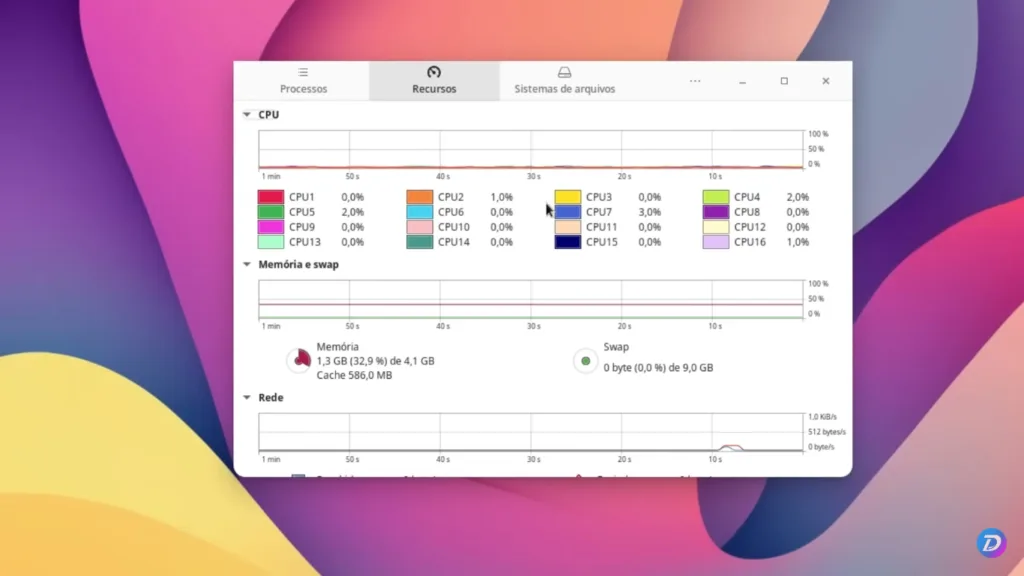
The Cutefish or Lingmo UI interface, which the system uses, has many Qt elements, even KWIN itself, KDE's window manager, is used together with several other KDE components. At the same time, the system uses several GNOME applications, in addition to some developed for the environment itself.
By default, we have a desktop that resembles macOS, with a dock at the bottom of the screen, rounded icons, the wallpaper also uses colors similar to macOS, and it even has a bar at the top of the screen. This bar can display global menus, just like macOS does, at least in some applications, since not all are compatible.
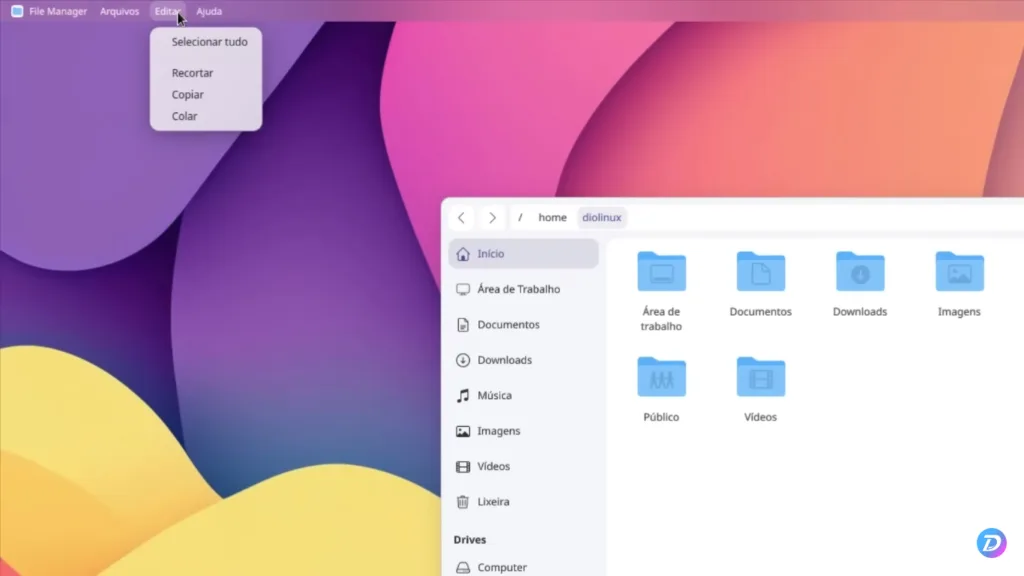
On the right side of this bar, we have a control center that, despite being accessed by the sound icon, gives access to Wi-Fi, dark mode, do not disturb, the screenshot tool, as well as the volume and a mini calendar. By the way, this computer does not have Wi-Fi, despite the option appearing there.

The power button displays the power options in a similar layout, and finally, a clock that, when clicked, displays the notification center, a design reminiscent of Deepin's notification center. This is also where the application icons are located in the system tray.

In the dock, we have the terminal, a native interface application, full of blur effects, with tab support, right-clicking gives us some options, but it is a basic application. Depending on your use, it may be enough.
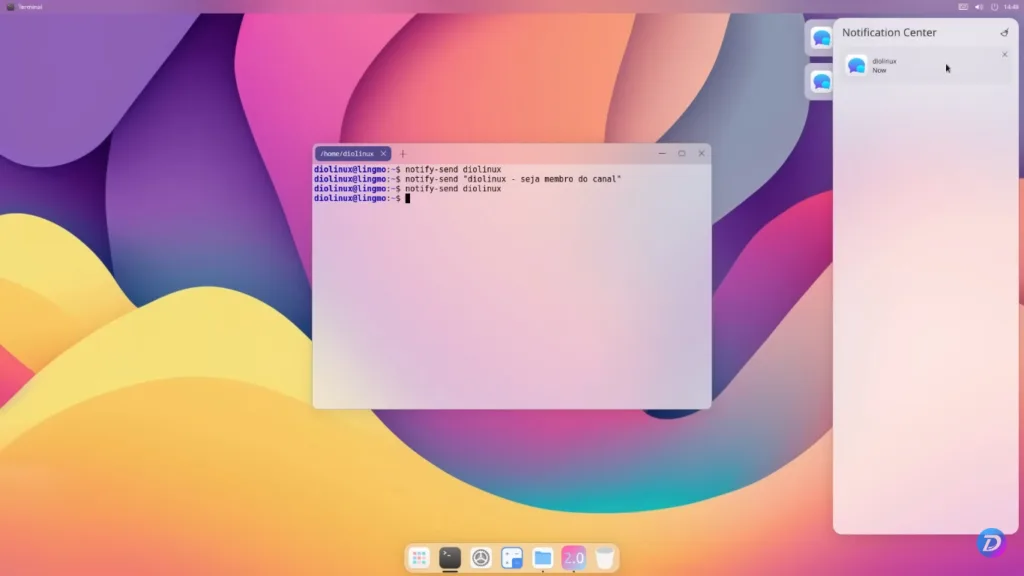
Then we have the system control center, with a design that resembles GNOME, macOS and several other systems today. Although the options exist, there is no way to configure many things, such as the network, for example. Although Wi-Fi and Bluetooth appear there, the computer does not have any of these features in hardware, even if they appear activated.
At least in our tests, the monitor section has no resolution options or anything, only scale. The appearance section is one of the most complete, with the option to change from light to dark theme, accent colors, configuration of effects and animations, although it has few options, font configuration and so on.
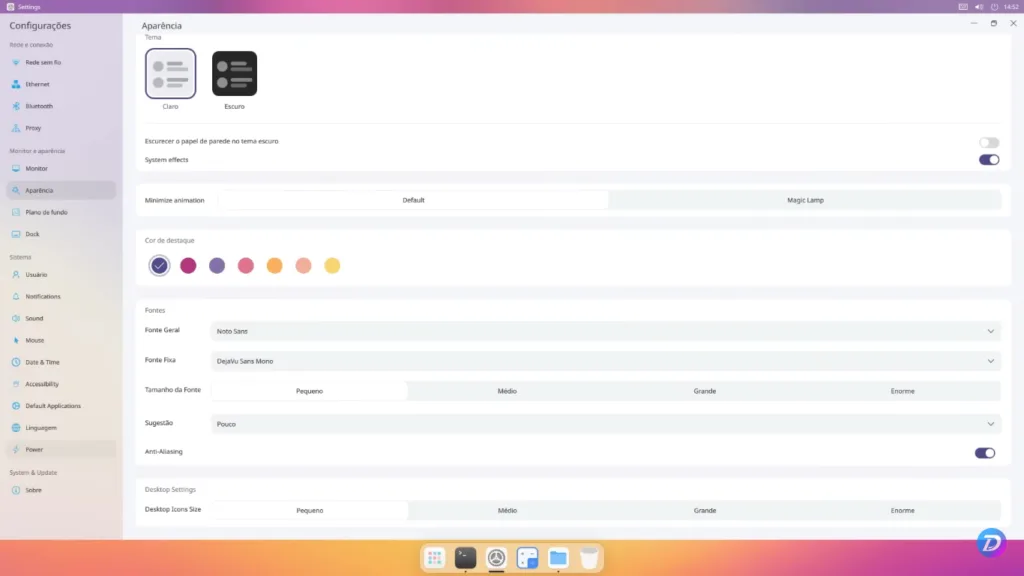
The dock can be used on either side of the screen, compact or extended, which is reminiscent of Ubuntu's current behavior. The rest is nothing special, they are common options for any operating system, and we end up on the "about" page, where we can see that we are using Lingmo UI 2.0, in Beta 3 of the system, with Kernel 6.1. If the third Beta still has so much to do, it seems that the final version will take a while.
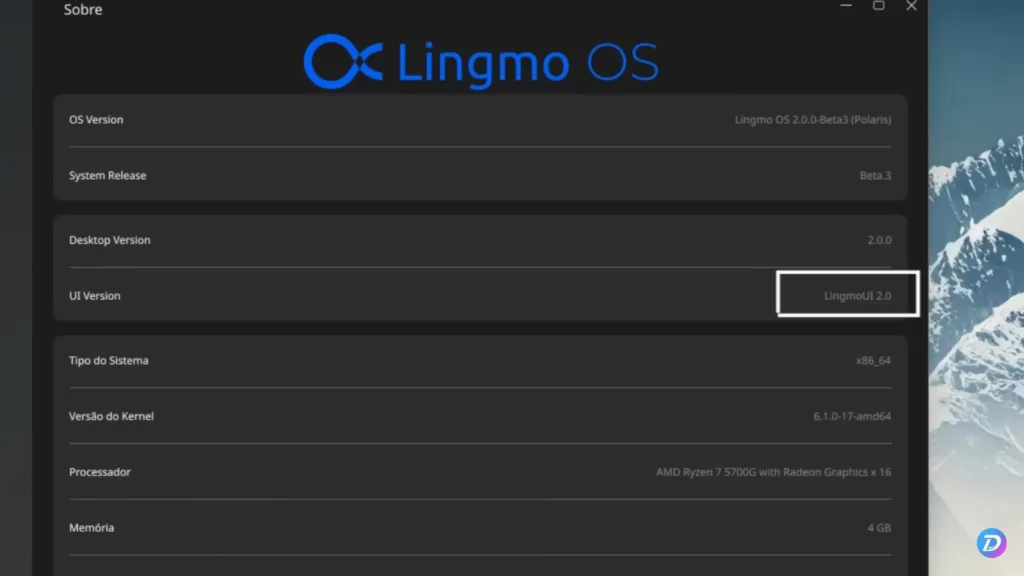
Returning to the dock, opening the menu, we see that it takes up the entire screen, presenting a pleasant visual, with blur and everything, but with several limitations. It allows the reorganization of icons, but not their grouping, and we can see the software that comes with the system.
Chromium is the default browser, we have an application to configure printers, since the control panel does not have this function, then we have a session to configure the input methods for oriental characters, which makes a lot of sense, given the origin of the system.
Interestingly, the photo viewer is a duplicate application, one is from GNOME, the other looks like Deepin, but it could be from the interface itself.
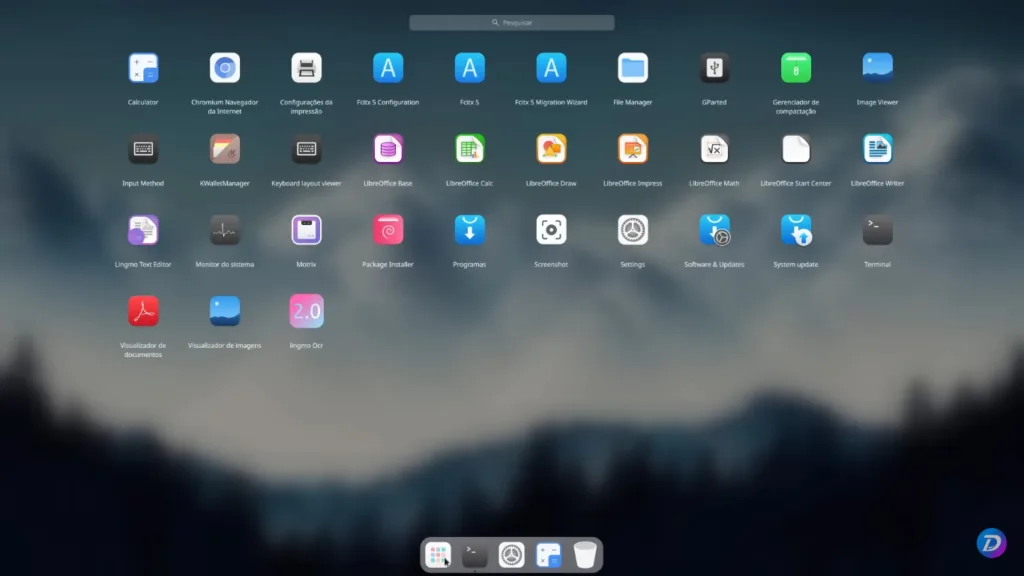
The file manager is unique to the interface and Lingmo OS, it has a look that mixes Deepin's file manager with a bit of Nautilus too, without many advanced options.
There is no way to access network folders through it, there is no way to change file permissions, there is no way to increase the size of icons, it only has two viewing modes and it does not support tabs, a feature present in practically every file manager in the Linux world.
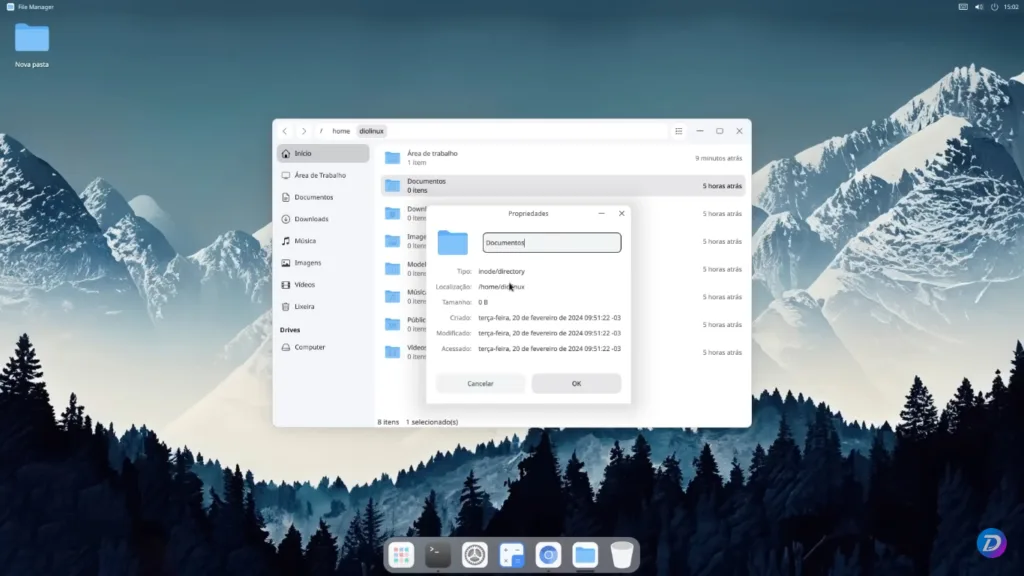
We have the LibreOffice suite, which uses a very retro theme that makes it look like software from the early 2000s. There is also the Lingmo OS text editor, which opens in two windows, which must be a bug. Its design is somewhat reminiscent of the terminal itself, very simple.
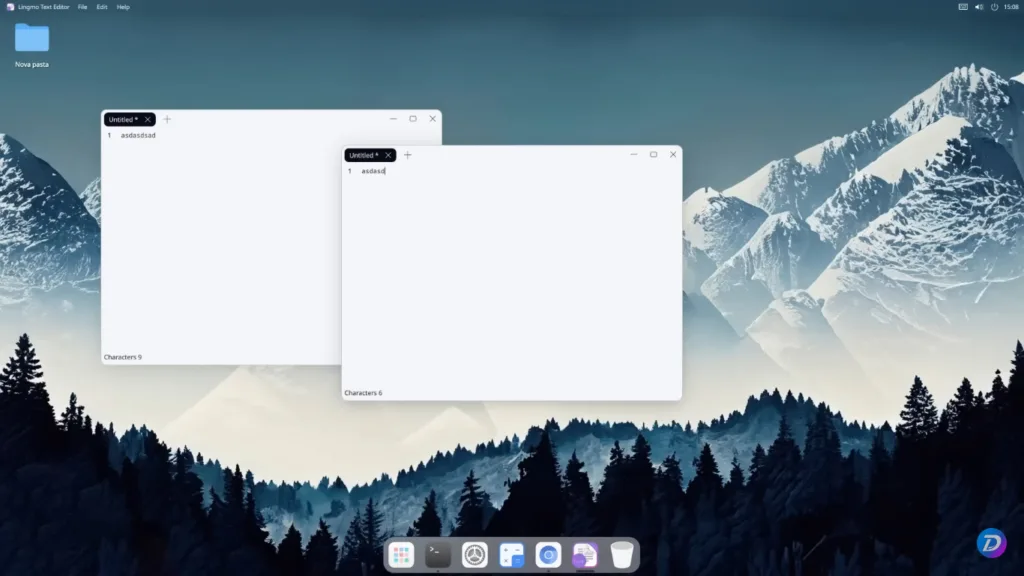
The app store is from GNOME, but it is full of problems, missing content, slow, not opening some menus, a bad implementation. We have a screenshot tool native to the system, it seems to work normally. Software and updates are not opening, the tool to check for updates, which seems to be native to the system, is giving an error at the moment.
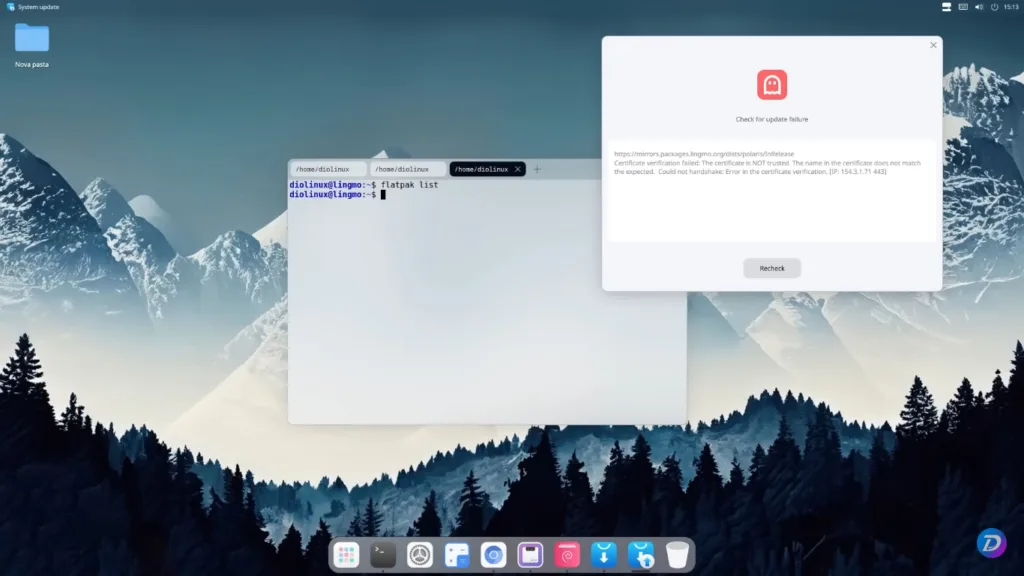
The system is so simple that we could practically see everything it has. That said, is there anything about it that is truly unique?
Is Lingmo OS worth using?
Given the number of issues, even considering that it is only a Beta, the system is more suited for those who want to try something “new”. Even if everything it has worked as it should, the experience would not be much different from using a customized Ubuntu, and you would be using a much more solid project.
The experience of using Cutefish or Lingmo OS is not very different from what you have or what you can have with other systems, perhaps the developers have big plans for it, but so far, it doesn't seem to have come out of a draft.
Since we're talking about a Chinese operating system, meet openKylin , the first to be fully developed in the country (or almost).
Source: https://diolinux.com.br/video/lingmo-os-um-linux-que-parece-o-macos.html




